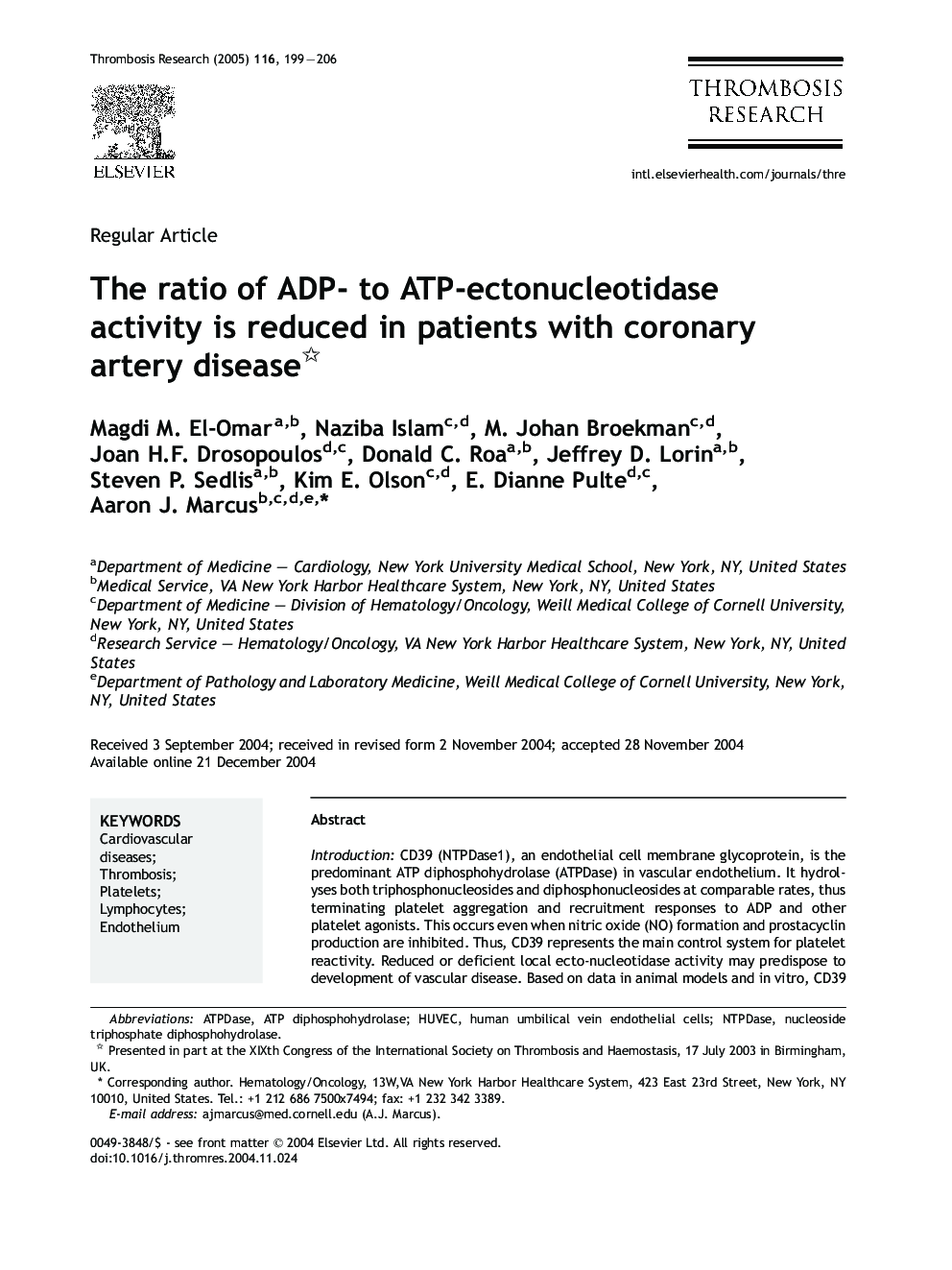| Article ID | Journal | Published Year | Pages | File Type |
|---|---|---|---|---|
| 9185477 | Thrombosis Research | 2005 | 8 Pages |
Abstract
In the patients, a decreased ratio of ADPase to ATPase activities (from 1.26 to 1.04) was observed despite increases in both ADPase and ATPase activities. Coronary artery disease was the only independent predictor of a difference in the ADPase/ATPase activity ratio by multivariate linear regression analysis (P=0.0035). This altered ADPase/ATPase activity ratio in patients may represent a reduction in endogenous defense systems against platelet-driven thrombotic events. These data may identify a population of patients with excessive platelet reactivity in their circulation. Increased generation of prothrombotic ADP in these patients implies a potential benefit from therapeutic intervention with soluble forms of CD39.
Keywords
Related Topics
Health Sciences
Medicine and Dentistry
Cardiology and Cardiovascular Medicine
Authors
Magdi M. El-Omar, Naziba Islam, M. Johan Broekman, Joan H.F. Drosopoulos, Donald C. Roa, Jeffrey D. Lorin, Steven P. Sedlis, Kim E. Olson, E. Dianne Pulte, Aaron J. Marcus,
